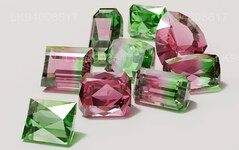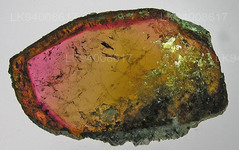
Gems
Sri Lanka’s gem industry has a very long and colorful history. Sri Lanka was affectionately known as Ratna-Dweepa which means Gem Island. The name is a reflection of its natural wealth. Marco Polo wrote that the island had the best sapphires, topazes, amethysts, and other gems in the world.
Tourmaline
Available in all the colours of the rainbow, Tourmaline also has a very complex mineral composition, which is the main reason behind their rich colour composition. Gemstones from Sri Lanka belonging to the Tourmaline species differ from yellowish-green to bright green.
One of the most important gem Tourmalines found in Sri Lanka are mixtures of Dravite and Uvite. Often brown, yellowish-brown, reddish-brown, or nearly black in colour, these species contain traces of vanadium, chromium, or both. When present in the right concentrations, these impurities produce rich green hues similar to tsavorite garnet.
While Uvite is rich in calcium, magnesium, and aluminium and Dravite is rich in sodium, magnesium, and aluminium; both forms within limestone that have been altered by heat and pressure and are fondly known as Savanna Tourmaline by gem dealers and merchants.
- Varieties: Bi-coloured, watermelon, cat’s eye, alexandrite-like (rare).
- Sources: Sri Lanka, Brazil, USA (California, Maine), Madagascar, Tanzania, Kenya, Russia, Afghanistan, Pakistan (prime new source).
- Toughness: Tourmaline ranks 7 to 7.5 on the Mohs scale.
- Precautions: Do not store in direct sunlight. Whilst tourmaline tends to be fairly stable and isn't affected by chemical exposure, it can still be harmed in heat.
- Treatments: The two most important tourmaline treatments are heating and irradiation. Changes resulting from heat treatment are stable and undetectable. Gems with abundant liquid inclusions can't withstand heat treatment. Color changes due to irradiation can fade with exposure to heat or bright light.
- History: In the 1500s, a Spanish conquistador found green tourmaline in Brazil which he mistook for emerald. His error held until the 1800s, when mineralogists finally identified tourmaline as its own mineral species. Variations of the name “schorl” may have been used to describe black tourmaline even before 1400.
Explore Gem Mines
-
Explore Gem Mines in Ratnapura from Negombo
Normale prijs Vanaf €80,95 EURNormale prijsEenheidsprijs / per -
Explore Gem Mines in Ratnapura from Colombo
Normale prijs Vanaf €112,95 EURNormale prijsEenheidsprijs / per -
Explore Gem Mines in Rathnapura from Kalutara
Normale prijs Vanaf €139,95 EURNormale prijsEenheidsprijs / per -
Ontdek edelsteenmijnen in Ratnapura vanaf Mount Lavinia
Normale prijs Vanaf €162,95 EURNormale prijsEenheidsprijs / per






























